¡Hola amigos, bendecido día¡
Hace muchos años que no participaba en esta fiesta cultural de mi país, se hace en los sectores populares (barrios) y me había olvidado de lo divertida que es, cuando yo estaba pequeña asistí a varias y recuerdo que en ese entonces se reunía casi toda la comunidad, líderes comunitarios, docentes, organizadores comunales y ciudadanos de todos los sectores inclusive aquellos excluidos de mala conducta, en los barrios todos se conocen y saben el oficio de cada quien je, je, je, pero este año que decidí ir había poquitas personas.

Hello friends, blessed day!
It has been many years since I had participated in this cultural festival in my country, it is held in the popular sectors (neighbourhoods) and I had forgotten how much fun it is, when I was little I attended several and I remember that at that time almost the whole community gathered, community leaders, teachers, community organisers and citizens from all sectors including those excluded from bad behaviour, in the neighbourhoods everyone knows each other and knows each other's job heh, heh, heh, but this year when I decided to go there were very few people.
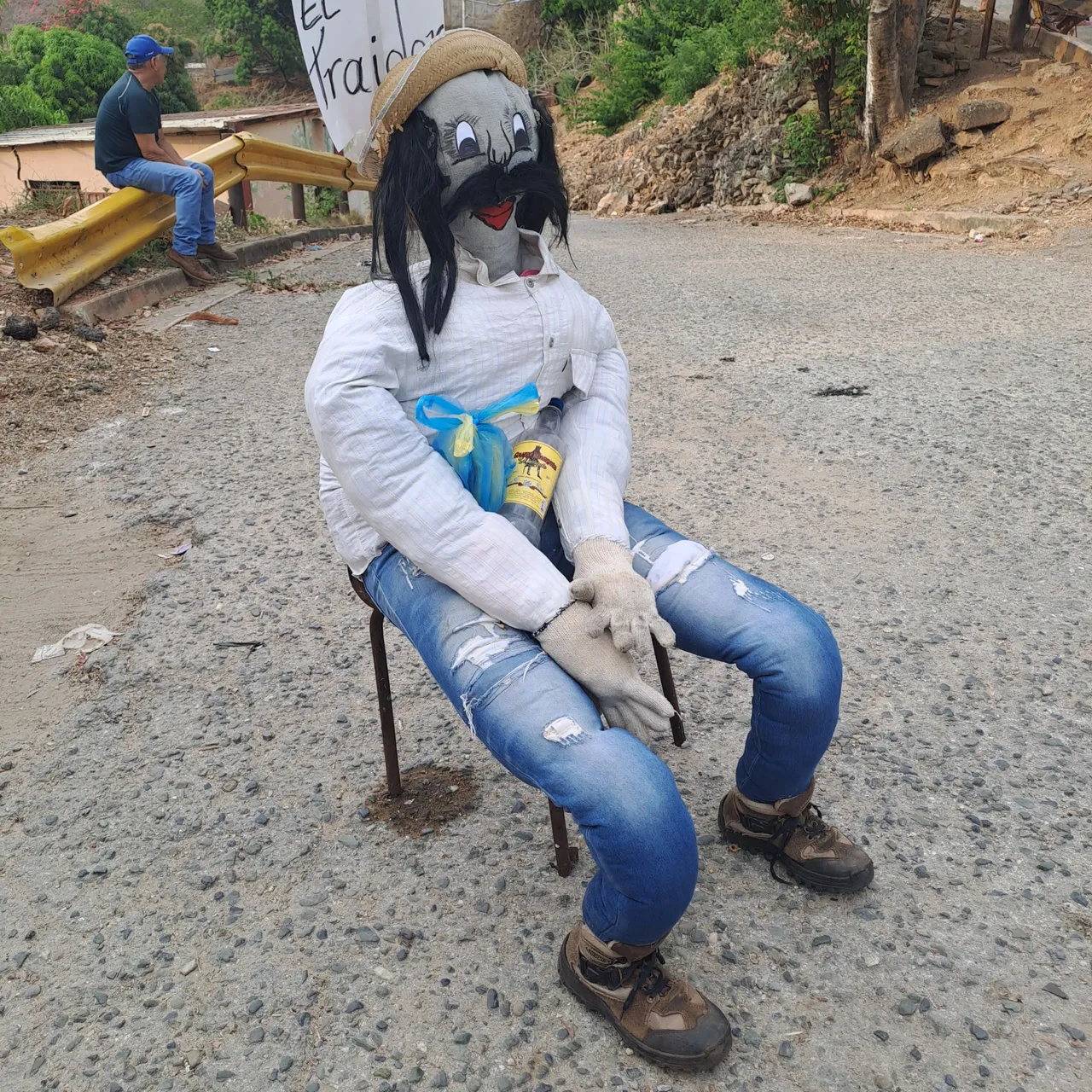
La actividad inicia unos días antes con la realización del muñeco que representa a Judas Iscariote quien era apóstol y fue el que traicionó a Jesús de Nazareth con un beso vendiéndolo a los romanos por la cifra de 30 monedas de plata, este apóstol era el tesorero y el que llevaba las finanzas de los recursos de Jesús, esta historia es un cuento popular con lo que se inicia la actividad, es una forma de pasar de generación en generación la historia religiosa que envuelve esta actividad. Este muñeco está hecho con trapos y ropas que la misma comunidad ha regalado. Su cuerpo se rellena con retazos de telas, se le hace el cabello, a veces bigote y se dibuja las expresiones de la cara.
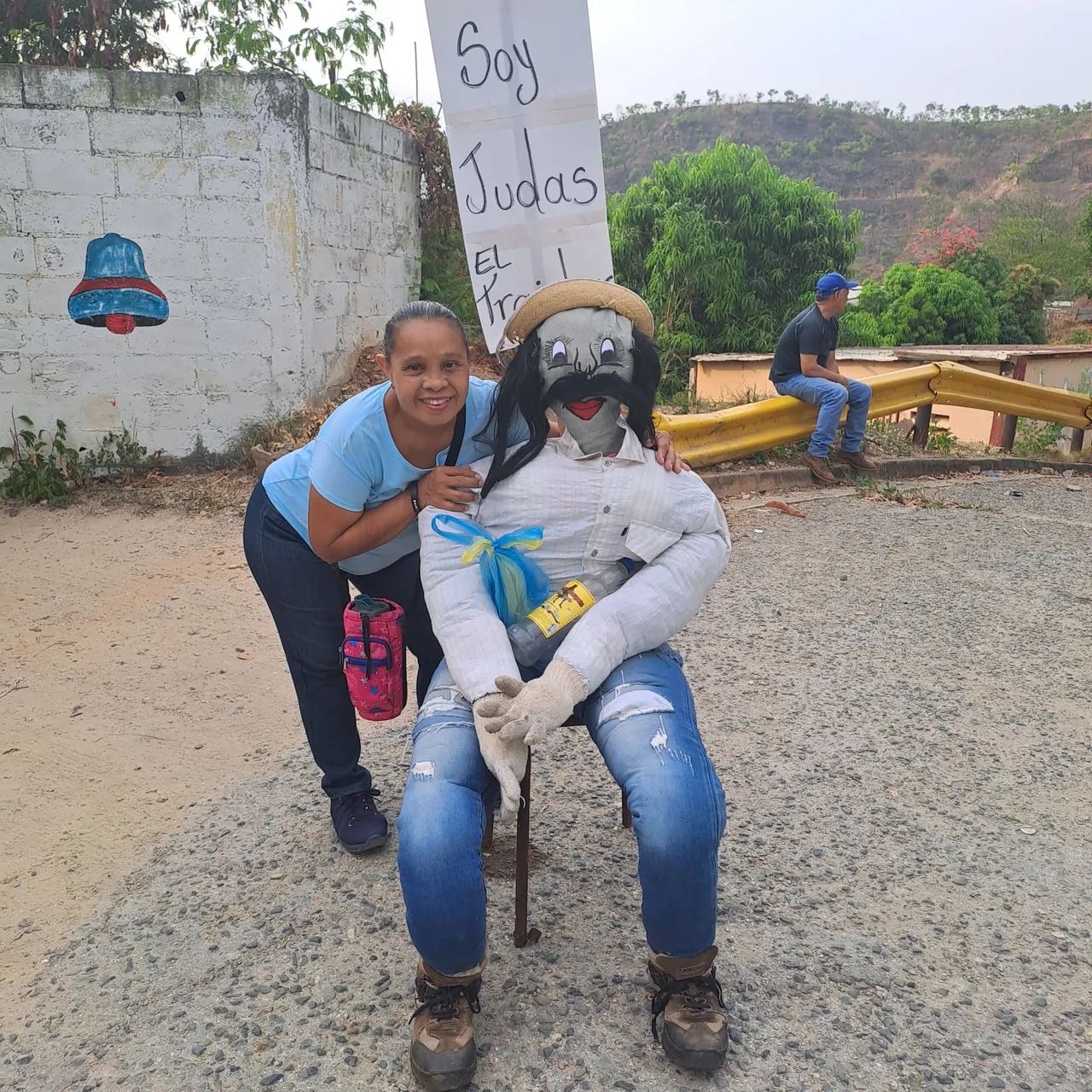
The activity starts a few days before with the making of the doll that represents Judas Iscariot who was an apostle and was the one who betrayed Jesus of Nazareth with a kiss, selling him to the Romans for 30 silver coins, this apostle was the treasurer and the one who took the finances of the resources of Jesus, this story is a popular tale with which the activity begins, it is a way of passing from generation to generation the religious history that surrounds this activity. This doll is made with rags and clothes that the community itself has given. Its body is stuffed with scraps of cloth, hair is made, sometimes a moustache and facial expressions are drawn.
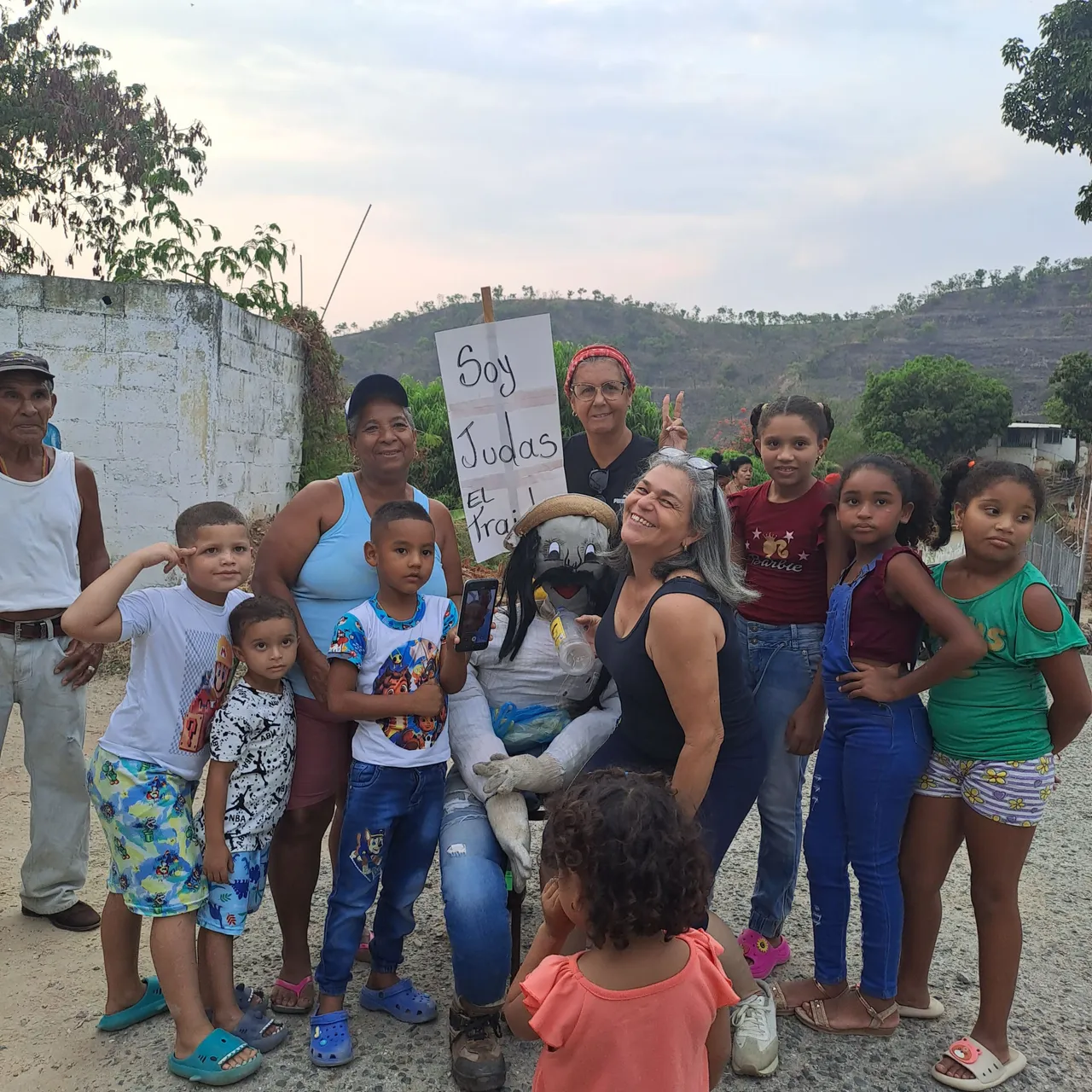
El muñeco de Judas los hacía parecido a cualquier figura pública que la sociedad le quisiera expresar su inconformidad, era una broma pesada, pero que servía de catarsis para un pueblo inconforme y en la democracia de años pasados podía ser hasta del mismo presidente de la república, sin miedo represarías las personas estaban en plena libertad de hacer su acto cultural, pero ya no es así, ahora Judas es cualquier muñeco sin tener un parecido con nadie.
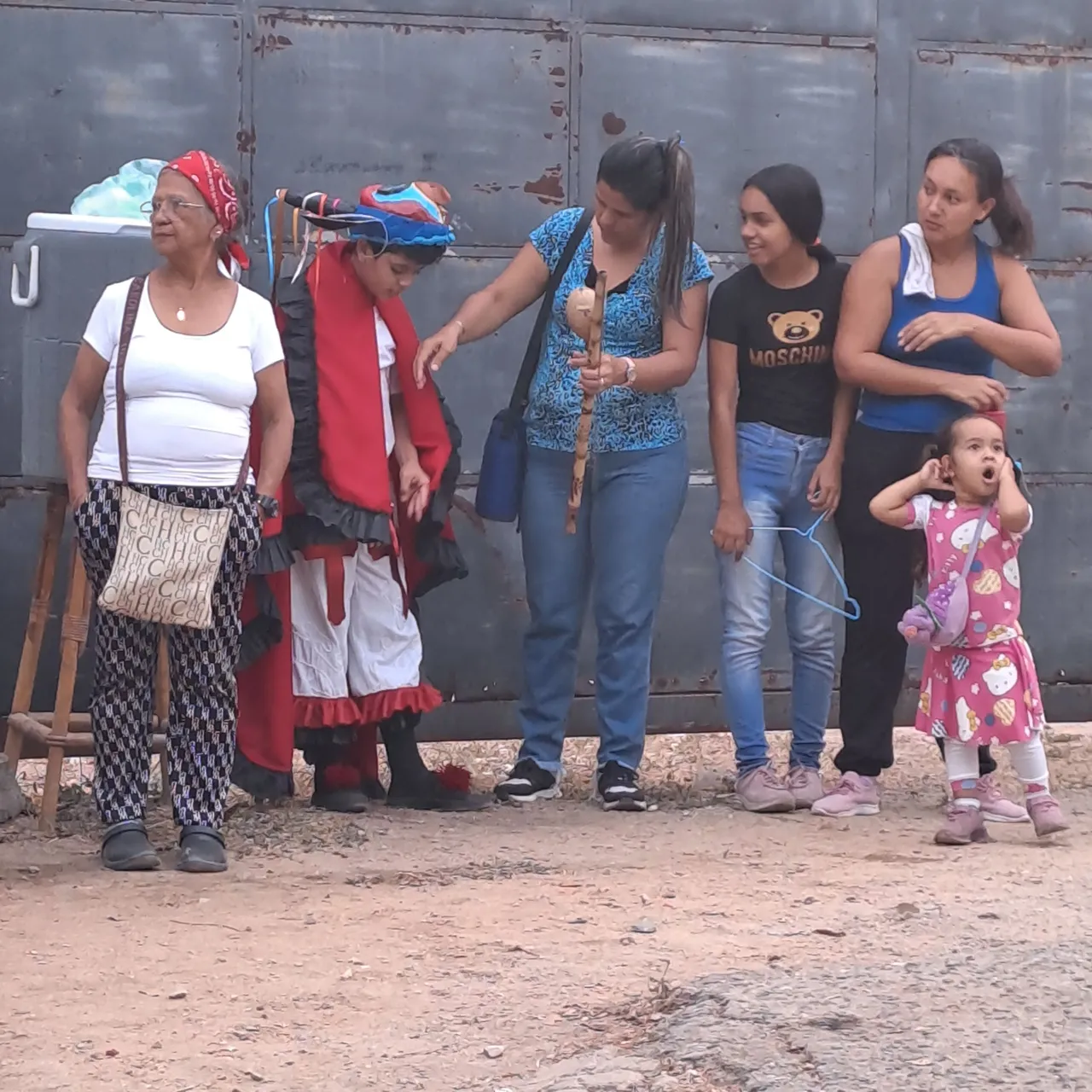
The Judas doll made them resemble any public figure that society wanted to express their dissatisfaction, it was a bad joke, but it served as a catharsis for a dissatisfied people and in the democracy of past years it could even be the president of the republic himself, without fear of reprisals people were free to make their cultural act, but it is no longer like that, now Judas is any doll without resembling anyone.

Se realiza el Domingo de Resurrección que es el último día de la Semana Santa porque es el día en que Jesús resucita y Judas se ahorca lleno de remordimiento por lo que había hecho, pero antes de prenderlo en candela se lee en voz alta su testamento y es el momento jocoso de risas y bromas, porque se mencionan personas de la comunidad en que Judas les deja sus prendas y se les dice las verdades en forma de chiste, terminada la lectura se prende. Este año le agregaron un baile que hizo a un niño disfrazado de diablo danzante, otra expresión cultural, asemejando que el bien venció al mal.
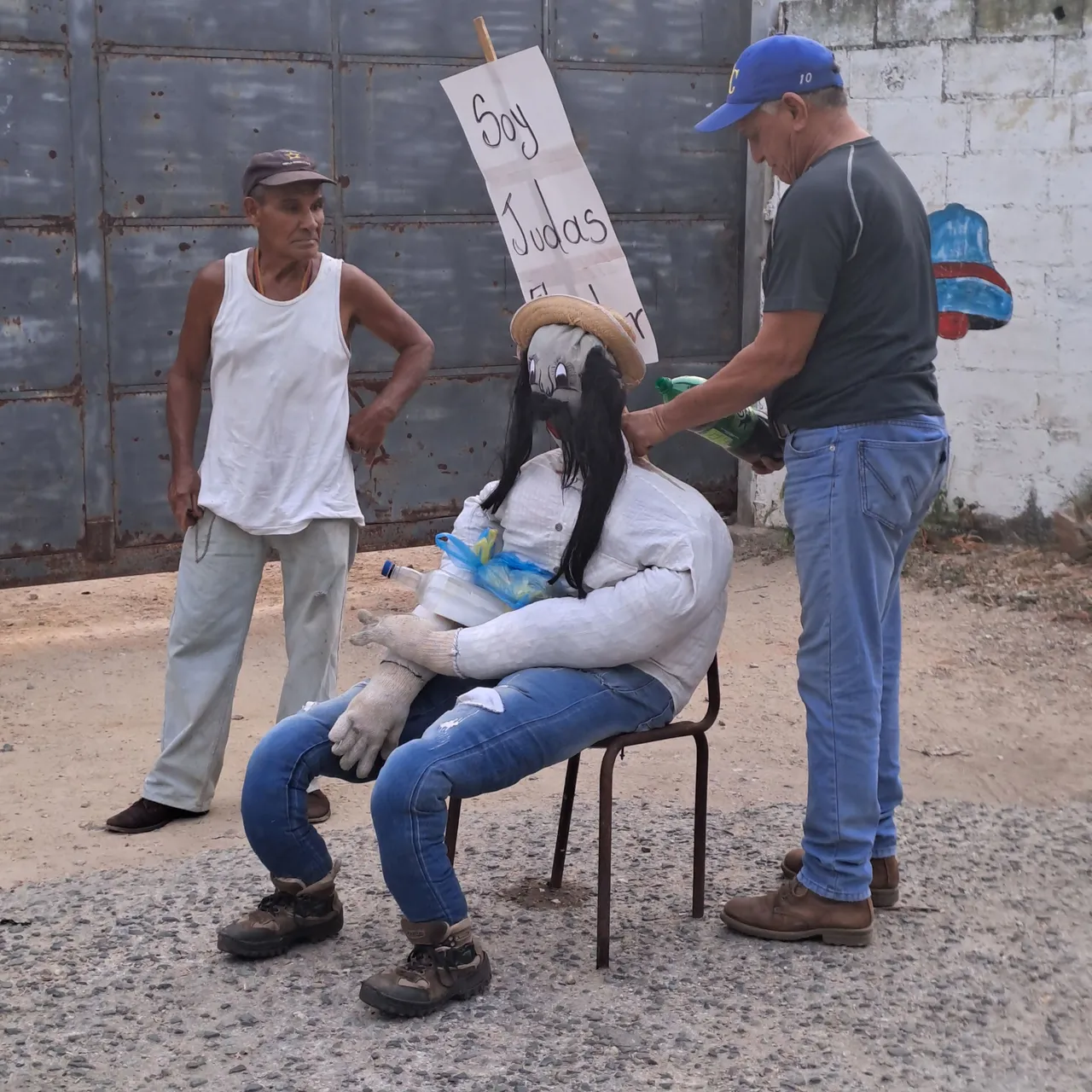
It takes place on Easter Sunday which is the last day of Holy Week because it is the day when Jesus is resurrected and Judas hangs himself full of remorse for what he had done, but before setting him on fire his testament is read aloud, and it is the jocular moment of laughter and jokes, because people from the community are mentioned in which Judas leaves them his clothes and tells them the truths in the form of a joke, once the reading is finished he is set alight. This year they added a dance that made a child disguised as a dancing devil, another cultural expression, resembling that good overcame evil.
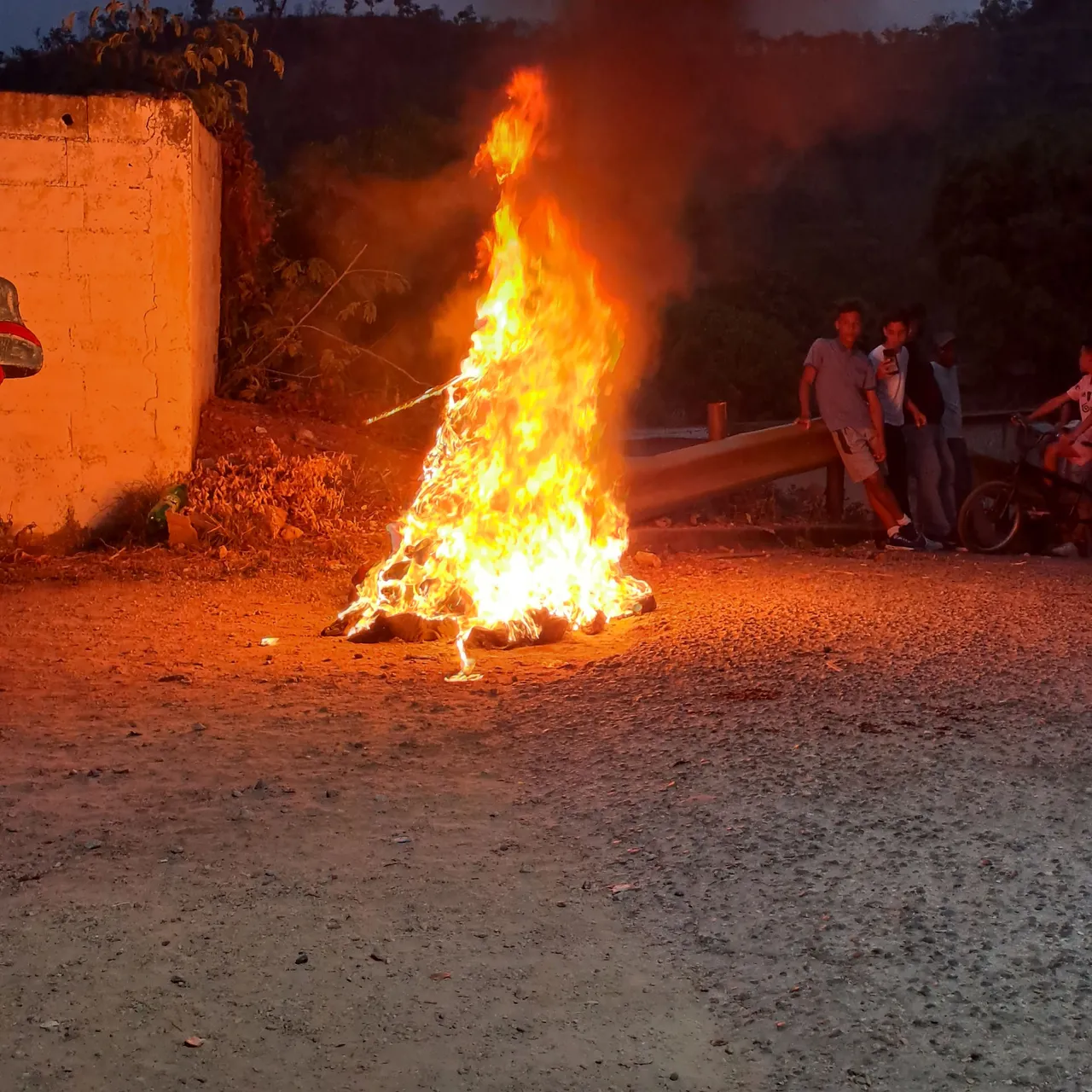
Aunque no me pareció muy gracioso este año pude conocer un lugar nuevo en el barrio, se llama el mirador y desde allí hay una vista hermosa de la laguna de taiguaiguay y mi tía si disfrutó mucho del evento, esta tradición simboliza la exigencia de justicia, una forma de denunciar los delitos y la erradicación de la maldad.

Although I didn't find it very funny this year I got to know a new place in the neighbourhood, it is called the mirador and from there there there is a beautiful view of the taiguaiguay lagoon and my aunt really enjoyed the event, this tradition symbolises the demand for justice, a way of denouncing crimes and the eradication of evil.

